
The Metropolitan Police Service (MPS), formerly and still commonly referred to as the Metropolitan Police, is the territorial police force responsible for law enforcement and the prevention of crime within the ceremonial county of Greater London. In addition, it is responsible for some specialised matters throughout the United Kingdom, including national counter-terrorism measures and the protection of specific people, such as the monarch and other members of the royal family, members of the government, and other officials.
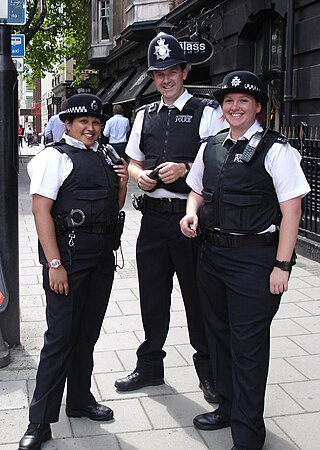
Law enforcement in the United Kingdom is organised separately in each of the legal systems of the United Kingdom: England and Wales, Scotland, and Northern Ireland. Most law enforcement duties are carried out by those who hold the office of police constable of a territorial police force.

Cumbria Constabulary is the territorial police force in England covering the unitary authority areas of Cumberland and Westmorland and Furness in the ceremonial county of Cumbria. As of September 2017, the force had 1,108 police officers, 535 police staff, 93 police community support officers, and 86 special constables.
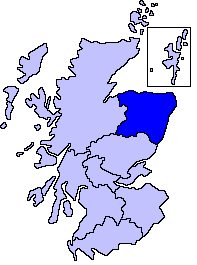
Grampian Police was, between 1975 and 2013, the territorial police force of the northeast region of Scotland, covering, from 1996, the council areas of Aberdeenshire, the Aberdeen City, and Moray. The Force area also covered some of the North Sea, giving Grampian Police the responsibility of policing the oil and gas platforms of the North East. The force was headquartered in Aberdeen.
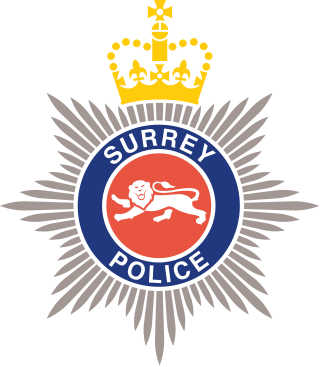
Surrey Police is the territorial police force responsible for policing the county of Surrey in South East England.

Lancashire Constabulary is the territorial police force responsible for policing the ceremonial county of Lancashire in North West England. The force's headquarters are at Hutton, near the city of Preston. As of September 2020, the force has 3,088 police officers, 190 special constables, and 280 police community support officers (PCSO), 300 police support volunteers (PSV), and 2,287 staff.

Strathclyde Police was the territorial police force responsible for the Scottish council areas of Argyll and Bute, Glasgow City, East Ayrshire, East Dunbartonshire, East Renfrewshire, Inverclyde, North Ayrshire, North Lanarkshire, Renfrewshire, South Ayrshire, South Lanarkshire and West Dunbartonshire between 1975 and 2013. The Police Authority contained members from each of these authorities.
Patrick Tomkins QPM was appointed HM Chief Inspector of Constabulary for Scotland by Royal Warrant in March 2007 and retired from the post in April 2009. He was formerly the Chief Constable of Lothian and Borders Police, which he joined in 2002 and was succeeded by David Strang. He initially joined Sussex Police in 1979 and in 1993 transferred to the Metropolitan Police Service as a Chief Superintendent. He served as divisional commander at Paddington Green before being promoted to Commander to attend the Royal College of Defence Studies in 1997, where he took the prize for the best research paper that year. He served as Commander (Crime) for the then 1 Area (Central), where he led a multi-force search for the serial rapist Richard Baker, and was the day shift Gold commander for the policing of the occupation of the Greek Embassy in London in 1999. In 1999 he was seconded to HM Inspectorate of Constabulary as a Deputy Assistant Commissioner.

Essex Police is a territorial police force responsible for policing the county of Essex, in the East of England. Essex Police is responsible for a population of over 1.8 million people and an area of 1,420 square miles (3,700 km2).

The Northern Constabulary was the territorial police force responsible for Northern Scotland, covering the Highland council area along with the Western Isles, the Orkney Islands and the Shetland Islands, which make up most of the Highlands and Islands area. It was the police force covering the largest geographical area in the United Kingdom, equivalent to the size of Belgium, but was one of the smallest in terms of officers, with about 715 officers. The Constabulary was one of those amalgamated to form Police Scotland in 2013.

Central Scotland Police was the territorial police force responsible for the Scottish council areas of Stirling, Falkirk and Clackmannanshire. The headquarters of the force were at Randolphfield House in Stirling.

Tayside Police was a territorial police force covering the Scottish council areas of Angus, Dundee City and Perth and Kinross until 1 April 2013, at which point it was subsumed into Police Scotland. The total area covered by the force was 2,896 square miles (7,500 km2) with a population of 388,000. The force operated from 27 police stations and has an establishment of 1078 police officers, 151 special constables and 594 support staff, as of February 2008. Tayside Police was Scotland's fourth-largest police force.

Fife Constabulary was the territorial police force responsible for the Scottish council area of Fife.
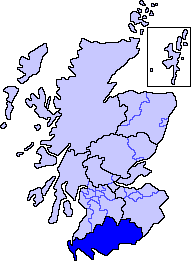
Dumfries and Galloway Constabulary was the territorial police force responsible for Dumfries and Galloway, Scotland until 1 April 2013.

The Scottish Police College is based at Tulliallan Castle, in Kincardine.
David James Reid Strang is a former senior police officer and public servant from Scotland. He has worked in a number of senior roles in the criminal justice sector, most notably as Chief Constable of Lothian and Borders Police and Her Majesty's Chief Inspector of Prisons for Scotland.
William Alan Skelly is Chief Constable of Lincolnshire Police in England. Skelly joined Devon and Cornwall Police from the Police Service of Scotland in December 2013 where he had been Silver Commander for Safety and Security for the 2014 Commonwealth Games in Glasgow.
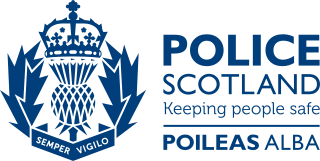
Police Scotland, officially the Police Service of Scotland, is the national police force of Scotland. It was formed in 2013, through the merging of eight regional police forces in Scotland, as well as the specialist services of the Scottish Police Services Authority, including the Scottish Crime and Drug Enforcement Agency. Although not formally absorbing it, the merger also resulted in the winding up of the Association of Chief Police Officers in Scotland.

Sir Iain Thomas Livingstone, is a retired Scottish police officer who served as Chief Constable of Police Scotland. He was previously Deputy Chief Constable Designate of the force. He was named as the next Chief Constable on 15 August 2018 and took up office formally on 27 August 2018. He will retire from Police Scotland in Summer 2023.



















